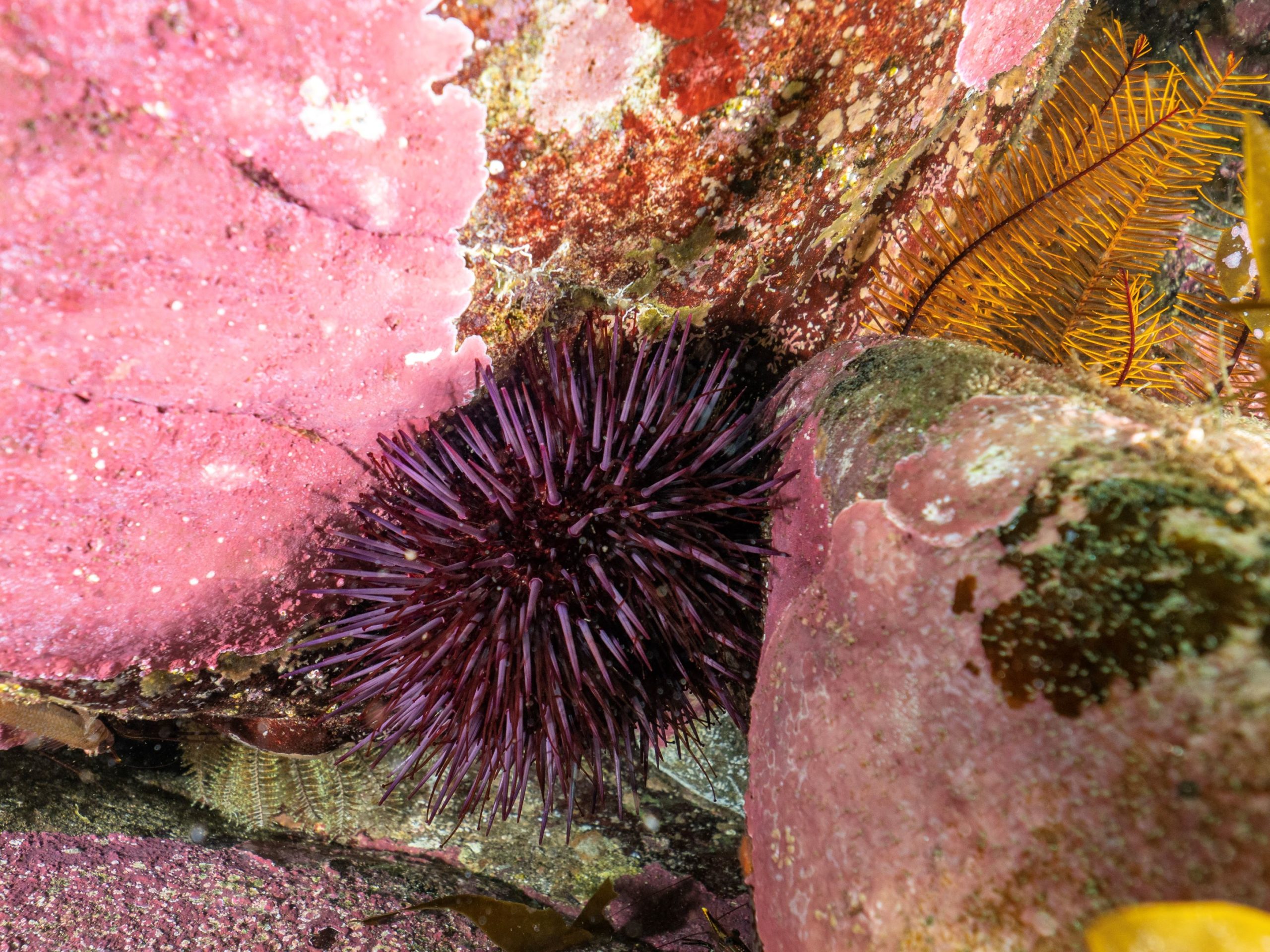Background
The commercial harvest of shortspined sea urchin in Tasmania can be traced back to the 1960s, however, a sustained fishery commenced in the 1980s (Hayward 2013). Shortspined sea urchin is traditionally the most valuable and, therefore, preferred target species species harvested by the commercial dive fishery (CDF) in Tasmania. The fishing season is generally from late July until February when the roe is at the highest quality and maximum profitability. There are established markets in Sydney and Melbourne for shortspined sea urchin roe.
Spatial and habitat variability in urchin growth rates, maximum sizes and size at maturity across key harvesting regions are unknown. The lack of information on the biology, population structure and roe characteristics of the urchin can limit the effective management of the fishery and also the profitability from the resource. IMAS researchers are currently studying the fisheries biology of shortspined sea urchins in Tasmania as part of FRDC project 2017-033 to better inform management and guide profitability of the fishery in the future. Due to the lack of information on the shortspined sea urchin precautionary approach to management has been adopted when setting the catch limits.

Credit: Matt Testoni



